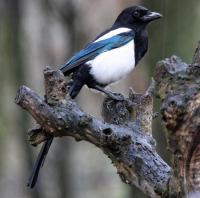- Home
- FAQs
- Customer Video Gallery
- Customer Photo Gallery
- Bird Facts
- Bird Food Blog
- Bird Information
- Feeding Advice
- Small Animal Information
- A to Z of Guinea Pigs
- A to Z of Hamsters
- A to Z of Rabbits
- Basic Care for Guinea Pigs
- Basic Care for Hamsters
- Basic Care for Rabbits
- Basic care for Chinchillas
- Basic care for Ferrets
- Basic care for Gerbils
- Basic care for Mice
- Basic care for Rats
- Buying a Healthy Small Animal
- Does your Reptile need a Licence
- Equipment for Ferrets
- Equipment for Hamsters
- Equipment for Mice
- Equipment for your Chinchilla
- Equipment for your Gerbil
- Equipment for your Guinea Pig
- Equipment for your Rabbit
- Keeping a House Rabbit
- Dog Information
- Cat Information
- Customer Information
- Fat Balls
- Suet Pellets
- Straights
- Seed Mixes
- Suet Treats
- Mealworms
- Bird Feeders
- My Account
Toadlets
Date: 2015-08-18 11:51:49 | Category: Bird Protection | Author: David Cole
There is a bonus for the omnivores in our bird populations this month.Have you ever looked at the clumps of toad and frog eggs at the edge of a pond, or later at the host of tiny tadpoles and wondered why we are not swamped by vast populations of these amphibians?
Well, the answer lies in the dewy grass of the early August mornings – tiny, and I mean tiny toadlets and froglets can be seen moving to areas where they will live before joining the circle of breeding.
Depending on when the spawn was laid, froglets and toadlets will leave the water in summer. They leave the water en masse and for a couple of days the area will be alive with tiny amphibians! They quickly disperse into surrounding areas and may not return to the water until they are old enough to breed themselves (2-3 years later).
Many of our bird species will be out there taking advantage of these tiny (and probably tasty) bite size snacks. All the members of the corvid family will be there and it is a wonder that any of the amphibians survive at all.
I’ve been asked for an easy way to explain to children the basic differences between frogs and toads: Frogs have smooth, moist skin and long, stripy legs and are likely to be found in damp habitats in the garden. Toads have warty skin, golden eyes and prefer to crawl rather than hop; if threatened a toad can puff itself up to appear bigger. Toads can tolerate drier habitats than frogs and spend less time in water. They should be encouraged and protected in the garden as they do much good with their diets consisting entirely on creatures, which for gardeners are pests.
The tiny creatures in my pictures are toadlets.






